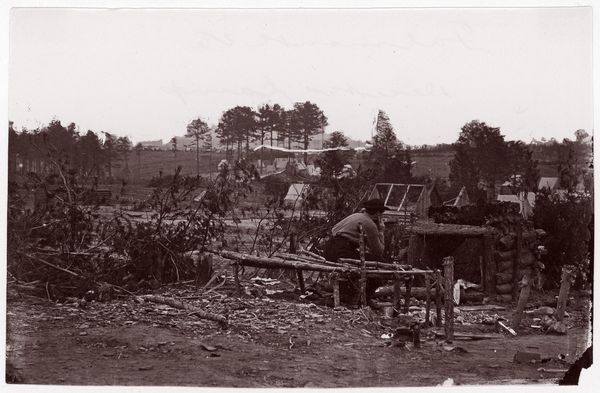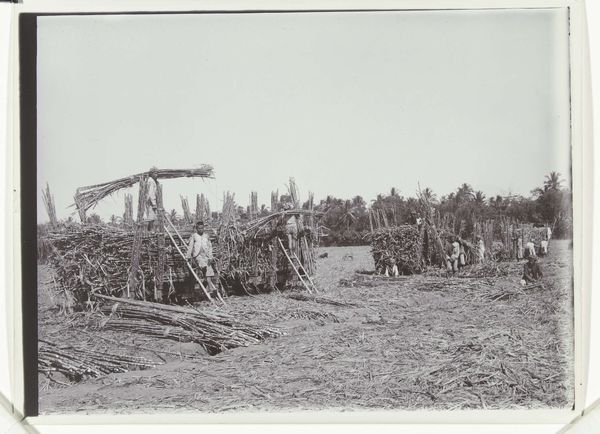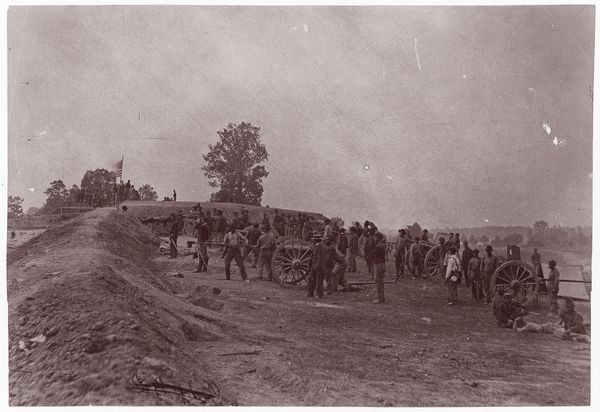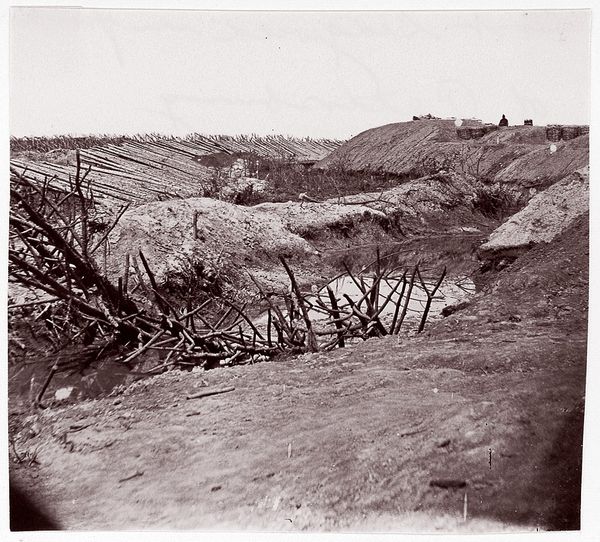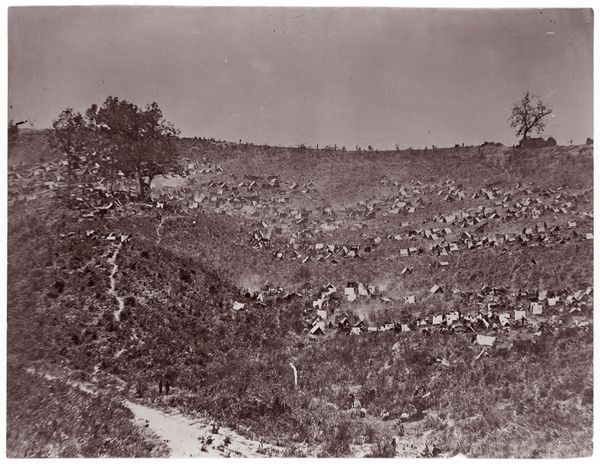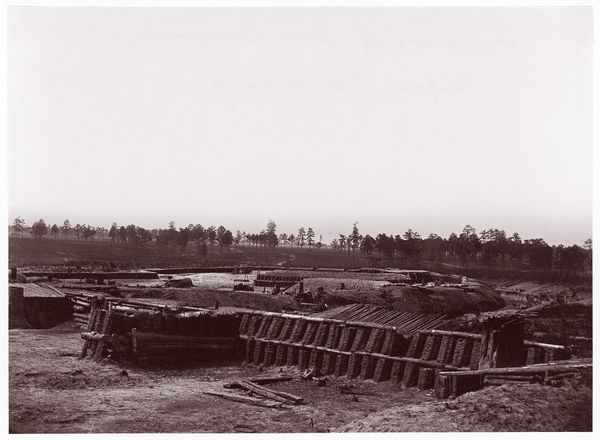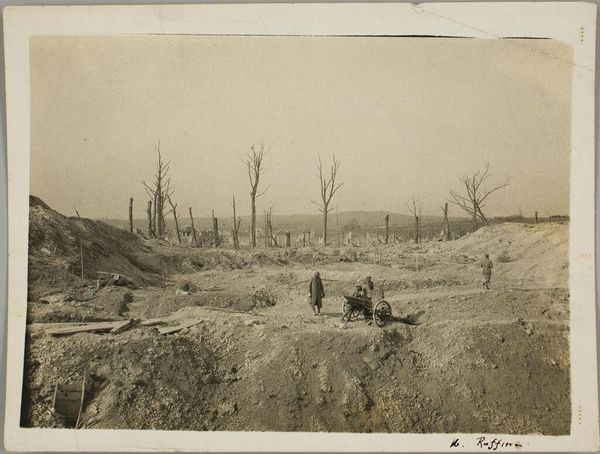![[Entrenchments on Left of Bermuda Hundred Lines, Near Richmond, Virginia] by Andrew Joseph Russell](/_next/image?url=https%3A%2F%2Fd2w8kbdekdi1gv.cloudfront.net%2FeyJidWNrZXQiOiAiYXJ0ZXJhLWltYWdlcy1idWNrZXQiLCAia2V5IjogImFydHdvcmtzLzliZTEyMDQwLTdiMDEtNDdiMS04ZTEwLTM1YmNjYTJhMThkNi85YmUxMjA0MC03YjAxLTQ3YjEtOGUxMC0zNWJjY2EyYTE4ZDZfZnVsbC5qcGciLCAiZWRpdHMiOiB7InJlc2l6ZSI6IHsid2lkdGgiOiAxOTIwLCAiaGVpZ2h0IjogMTkyMCwgImZpdCI6ICJpbnNpZGUifX19&w=3840&q=75)
[Entrenchments on Left of Bermuda Hundred Lines, Near Richmond, Virginia] 1864
0:00
0:00
photography, gelatin-silver-print
#
black and white photography
#
war
#
landscape
#
photography
#
gelatin-silver-print
#
monochrome photography
#
monochrome
Copyright: Public Domain
Editor: This gelatin-silver print, taken in 1864 by Andrew Joseph Russell, captures entrenchments near Richmond, Virginia, during the Civil War. The stark monochrome creates a sense of desolation and ruin. What strikes you about the composition and use of light in this photograph? Curator: The photograph’s power lies in its formal arrangements. Note the contrast between the jagged, broken lines of the entrenchments and the receding regularity of the trees on the horizon. This juxtaposition establishes a visual dialectic between chaos and order, perhaps reflecting the fractured state of the nation at that time. How does the gradation of light across the image impact your reading? Editor: I see what you mean. The light almost seems to be illuminating the path of destruction and then fades into the distance of the treeline, adding another layer to the composition. The gray-scale palette highlights the texture of the wood. Would you say Russell manipulated these elements on purpose to guide our eye, or was it incidental? Curator: Given the carefully constructed foreground and the calculated depth of field, it seems unlikely to be coincidental. He has skillfully harnessed the intrinsic qualities of his medium to make a definitive statement about the consequences of war, highlighting its disruption of both the human-made and natural landscape. Are we to assume that war only represents disorder? Editor: That’s fascinating. It really brings out the complexities embedded in what initially seems like a straightforward landscape shot. Thanks for pointing out those subtleties. Curator: My pleasure. Looking closely at these formal elements enables us to decode deeper layers of meaning that exist independent of historical context.
Comments
No comments
Be the first to comment and join the conversation on the ultimate creative platform.
